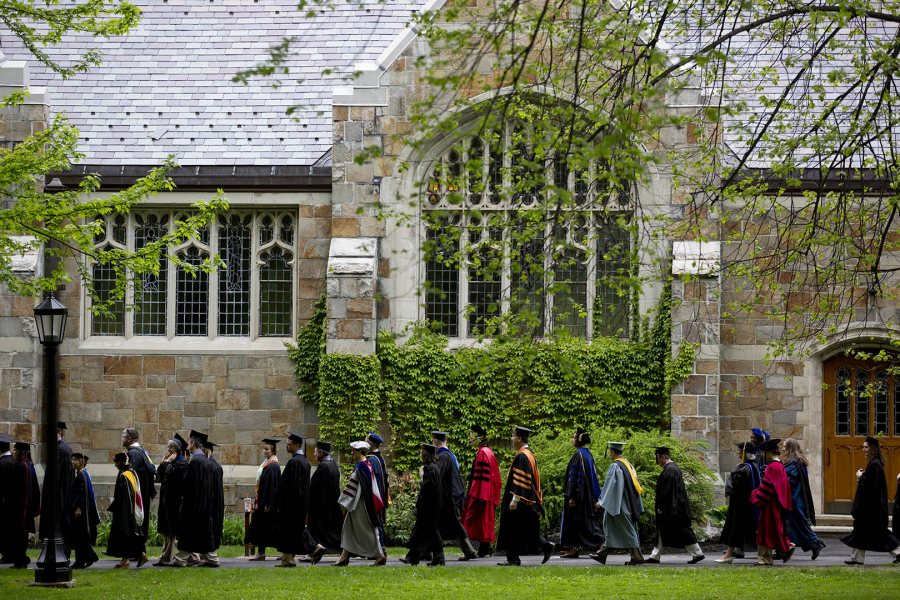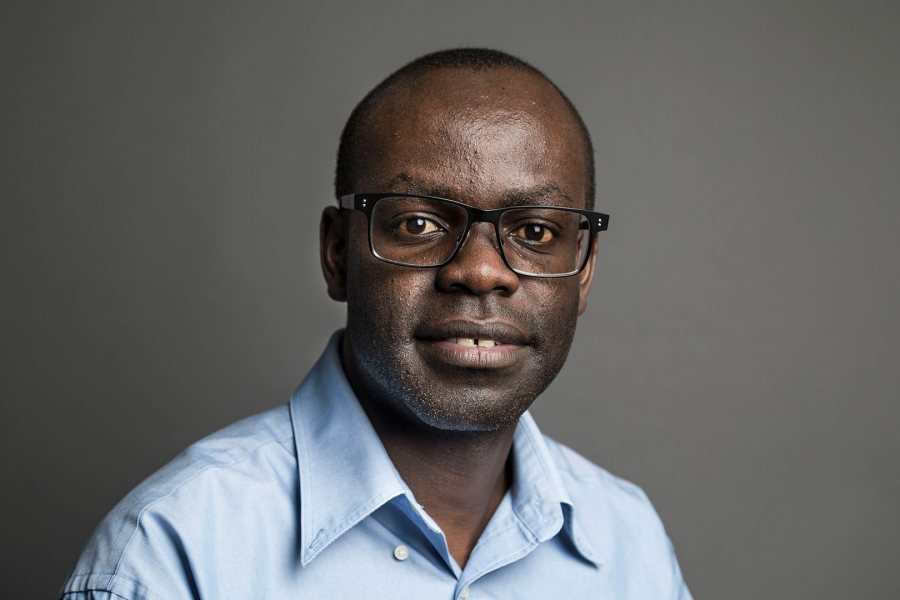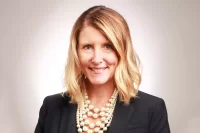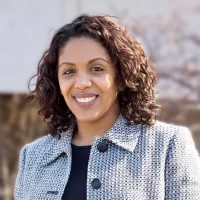
Bates College welcomes new faculty for 2016–17
In the 1970s and ’80s, President Hedley Reynolds began an expansion of the Bates professoriate that markedly increased the number, as well as the quality, of the college’s faculty.
When Reynolds retired, in 1989, all but 16 of the 159 faculty members had been appointed during his presidency.
This strategy elevated both the value and the reputation of the Bates education during the late 20th century, helping to make the college the national presence that it is today.
But another consequence of Reynolds’ strategy, and an inevitable one, is playing out in this century as the young fresh faces of the 1970s and ’80s approach retirement age.
In 2012, Bates filled five tenure-track openings. Last year, it filled four. This year, out of a total of 11 long-term hires, nine individuals have filled eight tenure-track positions, including two postdoctoral spots that will convert to tenure track a year from now.
In short, as President Clayton Spencer noted in a recent letter to the Bates community, the 2015–16 academic year was the college’s largest faculty-recruiting year in recent memory.
And the boom isn’t over: “This year we will search for 15 new faculty — 11 tenure-track, three long-term lecturers, and one senior, tenured position to lead the new Program in Digital and Computational Studies,” Spencer wrote.
Of course, as in Reynolds’ day, this influx of fresh talent amounts to an exciting process of renewal for the college. “What Bates looks like in the future is at least partially revealed each time we hire a new faculty member,” Dean of the Faculty Matt Auer writes in his overview of the new tenure-track hires.
Let’s meet them.
+Wesley Chaney, Assistant Professor of History
Name: Wesley B. Chaney
Position: Assistant Professor of History
Where he studied: Stanford University
Davidson College
His work: In his graduate work, Chaney focused on legal, social, and environmental issues in northwest China in the 18th and 19th centuries. His dissertation examined the impacts of the advent of regular civilian administration, specifically disputes over land and trade. At Bates, he teaches Chinese history from various eras and perspectives — and he’d like to introduce a course reflecting his current research into sports, gender, and the body in modern China. “It’s important to show undergrads the research that we’re doing and have them see how exciting that is.”
A teaching goal: Chaney based his dissertation research on archival material that included legal records involving homicides. Because of political or administrative concerns, he says, “creating these narratives was, in a lot of ways, more about creating a seamless narrative when, actually, what was on the ground was probably far messier. Historians need to be critical of the assumptions that went into the production of these records. We always keep in mind who’s the author, who’s the audience, why might this have been written, what is silenced in this source?”
These kids today: “It’s striking how many students today have studied Chinese language in high school, and have even been to China. So this is a big change. And even if they haven’t taken Chinese language, there’s far more knowledge about China now. But I give the historical context to understand the China of today — as well, I hope, as sparking a curiosity in a different way of being human.”
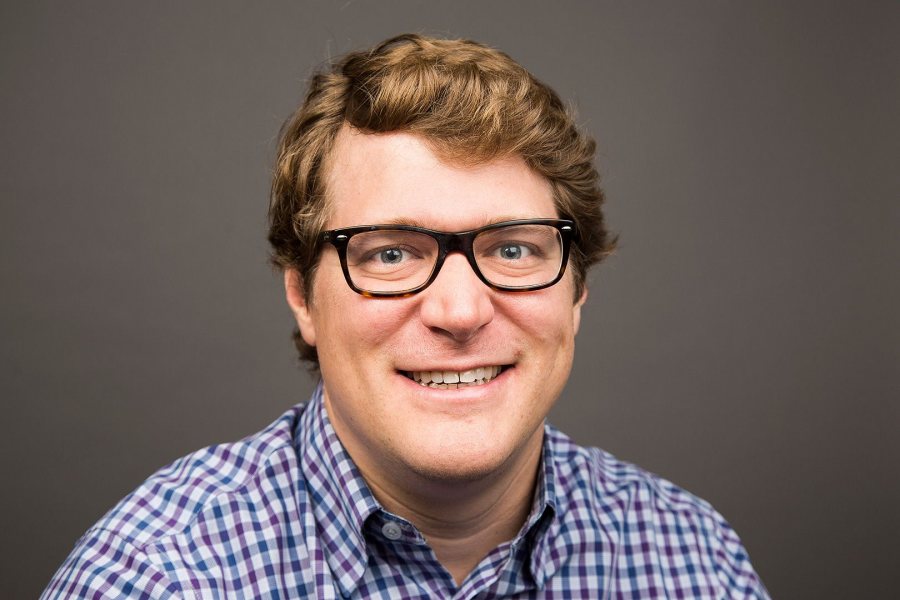
Wesley Chaney, Assistant Professor of History. (Josh Kuckens/Bates College)
+Aleksandar M. Diamond-Stanic, Assistant Professor of Physics
Name: Aleksandar M. Diamond-Stanic
Position: Assistant Professor of Physics
Where he studied: University of Arizona
Carleton College
Before Bates: Postdoctoral fellow, University of Wisconsin–Madison
His work: Virtually a vacuum, outer space does contain very diffuse matter — primarily hydrogen gas. This gas can coalesce to form stars, but the number of stars thus generated falls short of the potential. An astrophysicist, Diamond-Stanic seeks to understand that inefficiency in star creation. Specifically, he studies interactions between galaxies and the supermassive black holes at their centers, and how those interactions relate to gas and star formation. This work, for which Diamond-Stanic and Bates students are working with Hubble Space Telescope imagery, is supported by funds from the Space Telescope Science Institute.
A teaching goal: “Physics has a little public relations problem: ‘That’s hard, I don’t want to do that, you have to be like Einstein.’ That myth is problematic because you lose very talented people as a result. It’s a social justice problem: People are being denied the right to pursue what they might be interested in. I want to push for ways to recognize that and improve it, to make teaching more welcoming and inclusive, so that people can pursue their interests and dreams in the field.”
Why Bates: Diamond-Stanic discovered astrophysics through a welcoming and supportive professor at Carleton. “I wanted to get back to that small-college environment. I see my colleagues at larger research-focused institutions being pulled away from my values and priorities: How do you mentor and teach undergraduate students? That’s really No. 1 at Bates. Given the importance of those priorities to my own identity development, my own decision to go into physics, that’s something I value highly.”
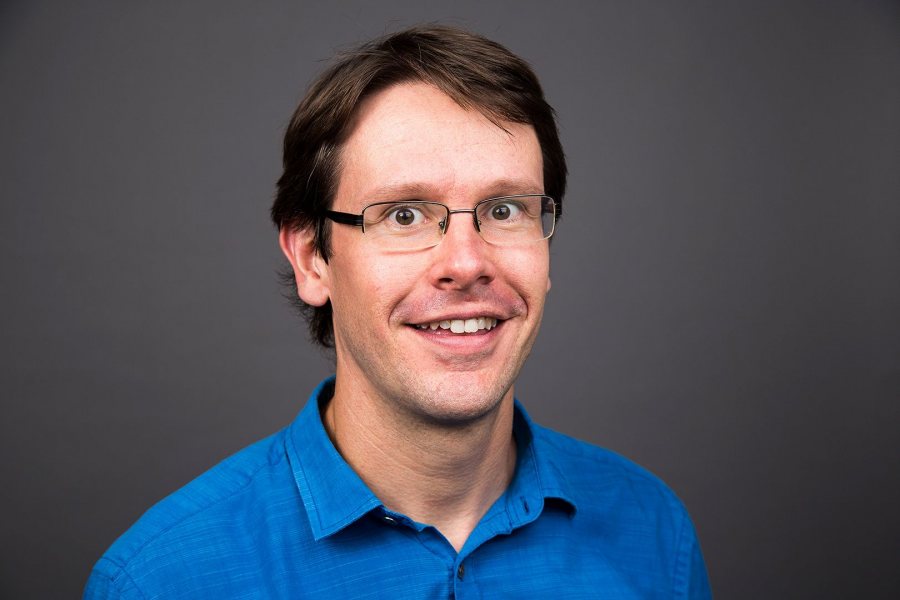
Aleksandar Diamond-Stanic, Assistant Professor of Physics. (Josh Kuckens/Bates College)
+Nathan C. Faries, Assistant Professor of Asian Studies
Name: Nathan C. Faries
Position: Assistant Professor of Asian Studies (joint appointment)
Where he studied: The Pennsylvania State University
Baylor University
Wheaton College
Before Bates: Associate Professor of English, University of Dubuque
(A tenured position; he left in good standing to join family at Bates.)
His work: Faries teaches Chinese language, literature, and culture. He is an authority on Christian narratives in China and has recently researched Catholicism, the official rehabilitation of Confucianism, and the important 20th-century writer and literary scholar Su Xuelin. Faries wrote The “Inscrutably Chinese” Church: How Narratives and Nationalism Continue to Divide Christianity.
The appeal of his work: “I grew up in a kind of missionary culture where there was this idea of the fierce oppressive Chinese government, the underground church, and all this secret stuff going on. And I went there to live, and realized that is not the whole story. I wanted to know: What are the mechanisms of control and freedom? How does the government negotiate its relationship with people who have a loyalty outside of the borders? And how do those Christians negotiate their identity, because they’re through-and-through Chinese? I like to see how narratives help them walk this tightrope between different parts of themselves.”
Why Bates: “Bates students have an attitude about education that I appreciate. They have questions, they’re engaged in their studies. It’s not a sideline for them or a career move. It’s liberal arts studies: How can I enlarge my vision through this and serve society eventually? And the college has all this support for pedagogy, how to be a better teacher. It’s a great focus.”
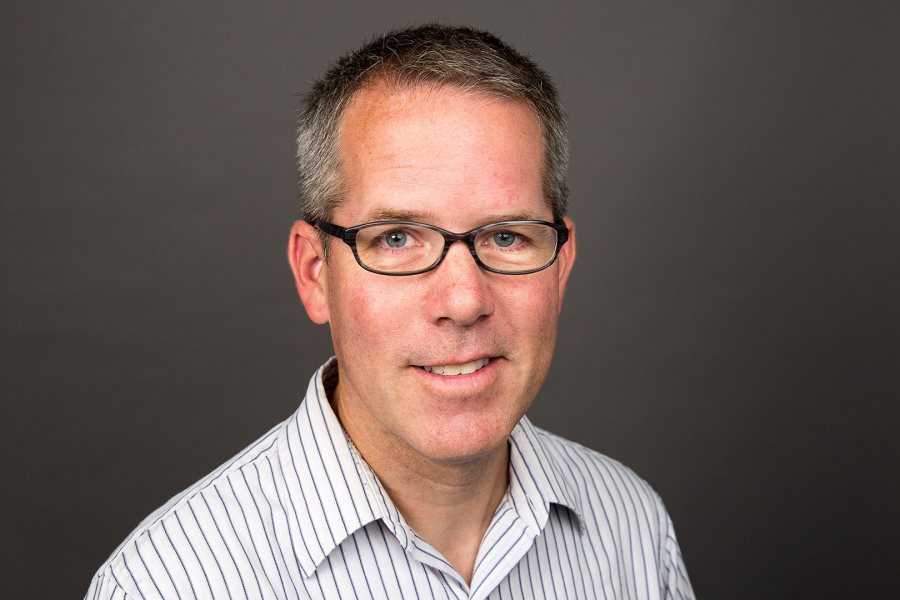
Nathan Faries, Assistant Professor of Asian Studies. (Josh Kuckens/Bates College)
+Carolina González Valencia, Mellon Diversity and Faculty Renewal Postdoctoral Fellow
Name: Carolina González Valencia
Position: Lecturer in Art and Visual Culture
Mellon Diversity and Faculty Renewal Postdoctoral Fellow*
Where she studied: School of the Art Institute of Chicago
Broward College
Her work: González brings a studio art background to work in new media, film, and video, including animation. A native of Colombia, her projects include videos that combine diverse production methods to explore issues of family and personal history, migration and immigration, feminism, displacement, and labor. As a Mellon Diversity and Faculty Renewal Fellow in 2016–17, she’s designing curricula for teaching animation and video in addition to teaching two courses.
Why she teaches: “Teaching allows me to connect with different ideas and to expand the conversation. I see the classroom as a circulation system, where we learn from and inspire each other. This exchange is refreshing and nurturing. Teaching also allows me to expand and question my research, to keep an active dialogue with my field — and at the same time, to facilitate a creative process for students where they can see themselves as makers of their own ideas.”
Why Bates: “Art by its nature is interdisciplinary, so teaching art to students who are studying different fields creates a rich exchange of ways of thinking, researching, and interests that’s unique to a liberal arts college like Bates. I’m eager to collaborate with other fields — Latin American studies, film studies, women and gender studies, social sciences, just to name a few. And I’m excited to see how my own art practice will develop within this context.”
*Mellon Diversity and Faculty Renewal Postdoctoral Fellows become tenure-track assistant professors in their second year at Bates.
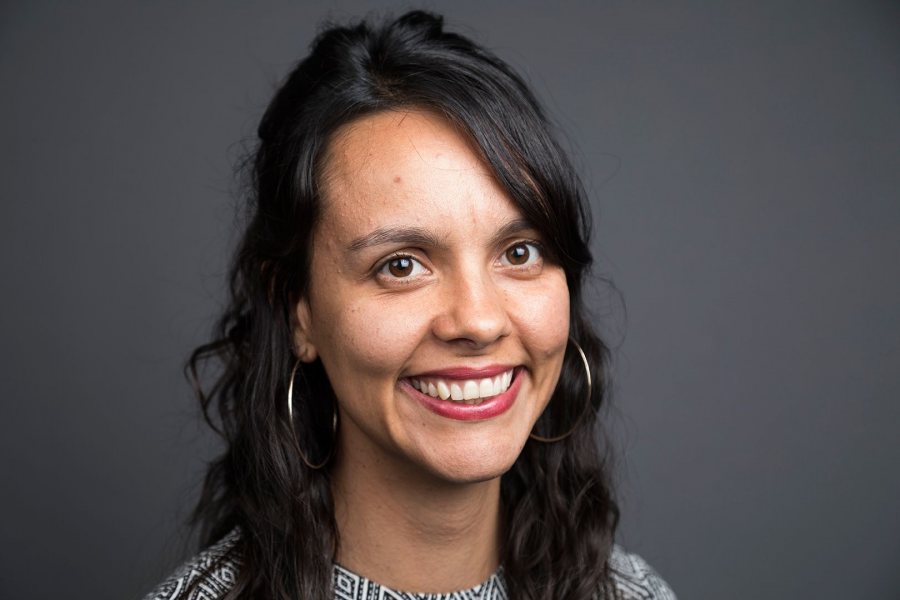
Carolina Gonzalez Valencia, Mellon Diversity and Faculty Renewal Postdoctoral Fellow and Lecturer in Art and Visual Culture. (Josh Kuckens/Bates College)
+Andrew J. Kennedy, Assistant Professor of Chemistry
Name: Andrew J. Kennedy
Position: Assistant Professor of Chemistry
Where he studied: University of Virginia
Providence College
Before Bates: Postdoctoral fellow, University of Alabama at Birmingham
His work: Kennedy studies phenomena involved in specific types of learning and memory, such as those that enable us to use language. Specifically, he looks at so-called epigenetic mechanisms, or chemical processes that control the organization of genes, as they relate to synaptic plasticity and long-term encoding of memory. Supported by the Pitt-Hopkins Research Foundation, he is conducting pioneering research into Pitt-Hopkins Syndrome, a rare disorder on the autism spectrum. In related research funded by the INBRE Investigator program, he’s also studying approaches to enhance cognition more generally.
What he loves about his work: “We’re in a position to ask really exciting questions about how the brain functions to facilitate learning and memory. A century ago, quantum physicists developed tools to start probing the fundamental aspects of matter, and it was a whirlwind of discovery. I think we’re entering a similar era in neuroscience. In this century, one of the big questions will be how the brain works to elicit complex human behavior. As long as there have been humans, we’ve wondered what it means to be human, and we can now look into the brain at a molecular level and start to understand that in a physical way. So, it’s a very exciting time.”
Why Bates: “Bates is special because it bridges the gap between the educational excellence of an elite small college and a commitment to high-quality research. You have juniors and seniors who have gained a deeper understanding of the underlying principles in the classroom, and you can put them into research labs that are asking the kinds of questions that they may devote themselves to in graduate school and beyond.”
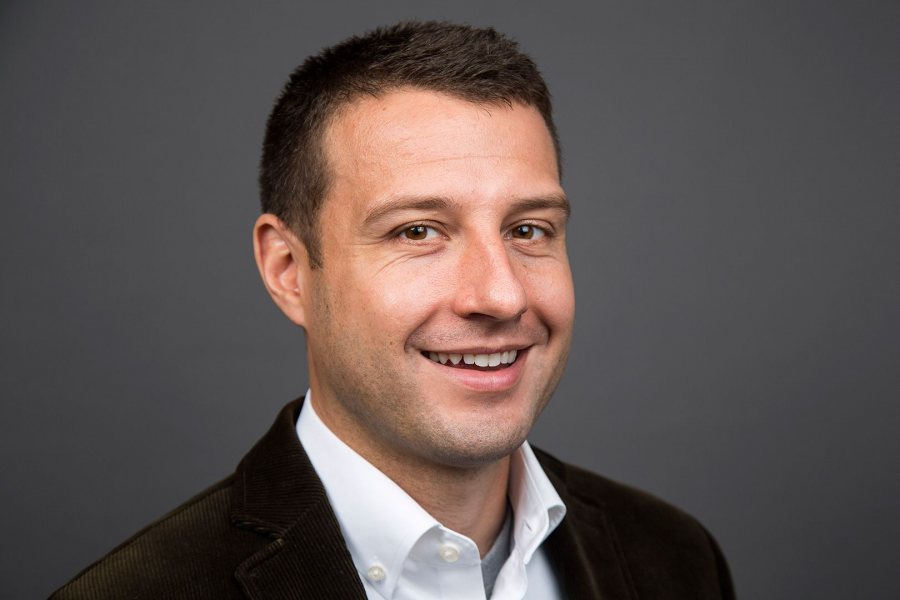
Andrew Kennedy, Assistant Professor of Chemistry. (Josh Kuckens/Bates College)
+Yinxing (Mia) Liu, Assistant Professor of Asian Studies
Name: Yinxing (Mia) Liu
Position: Assistant Professor of Asian Studies (joint appointment). From 2014 to 2016, Liu was a lecturer in Asian studies and a Mellon Postdoctoral Fellow in the Humanities at Bates.
Where studied: University of Chicago
The Pennsylvania State University
Xiangtan University, China
Before Bates: Postdoctoral associate, East Asian Studies Center, Yale University
Her work: Liu is an art historian who studies modern and contemporary art, cinema, and visual culture in China and East Asia, focusing on the dynamics and cross-fertilization between different media. She has previously written on landscape aesthetics in Chinese cinema, while her recent work focuses on pictorialist photography in China during the mid-20th century, its social-political engagements, and its interaction with traditional art media such as ink painting.
Why study Chinese art? “If you want to engage with the world, Chinese culture is a huge part of the world. And Chinese art has a very strong presence in contemporary art now. Also, the beauty of art is that you can’t really pin it down. Art is a good way for us to challenge our preconceptions and jog our prejudices. It keeps our minds open, young, and fresh. That’s very fitting for a liberal arts education, too — that’s the point of us being here, really. In the case of Chinese art, especially, we can see different perspectives and hear different voices challenging one message from a single source, and also jolting our preconception of a culture and a tradition that keeps evolving with the time.”
Why Bates: “I like the liberal arts setting; I never had experience with it before I came to Bates. I like the freedom of my research — I can define my own research profile, within reasonable boundaries. I also like the fact that students are very engaged. They want to learn.”
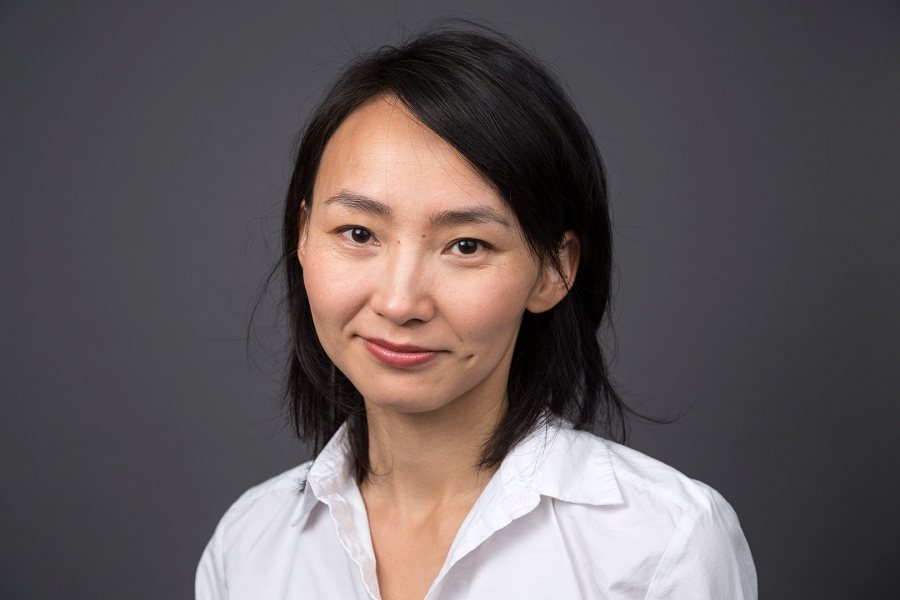
Mia Liu, Assistant Professor of Asian Studies. (Josh Kuckens/Bates College)
+Andrew M. Mountcastle, Assistant Professor of Biology
Name: Andrew M. Mountcastle
Position: Assistant Professor of Biology
Where he studied: University of Washington
Bowdoin College
Before Bates: Postdoctoral fellow, Harvard University
His work: Mountcastle studies mechanisms that animals employ for motion through environments that can be complex, dynamic, and often unpredictable. His current focus is insect flight. “Insects are ubiquitous, and yet there are so many aspects of insect life and locomotion patterns that we don’t fully understand. Wings have fascinated me for years: They are highly adapted and the focus of intense, often competing, selective pressures. In addition to flight, insect wings also have assorted other functions, including helping camouflage the insect or facilitating courtship activity.” Most recently, he has worked to incorporate a type of joint found in wasp wings into a flying microrobot.
The Maine connection: Mountcastle grew up in Orono, where his father recently retired from the University of Maine physics faculty. “Maine has been in my blood ever since. It’s great to be back.”
A teaching goal: As an undergraduate, Mountcastle took a physics course in which students were expected to develop and address their own research questions. (He developed a microphone array to locate birds by their calls.) “I was asking questions that, to my knowledge, hadn’t been explored, and was coming up with tools and techniques to answer them. It was thrilling. I really try, in my teaching, to bring my students to the frontiers of scientific knowledge. For me, that was the most rewarding part, as opposed to just sitting there and learning about what other people have already learned.”
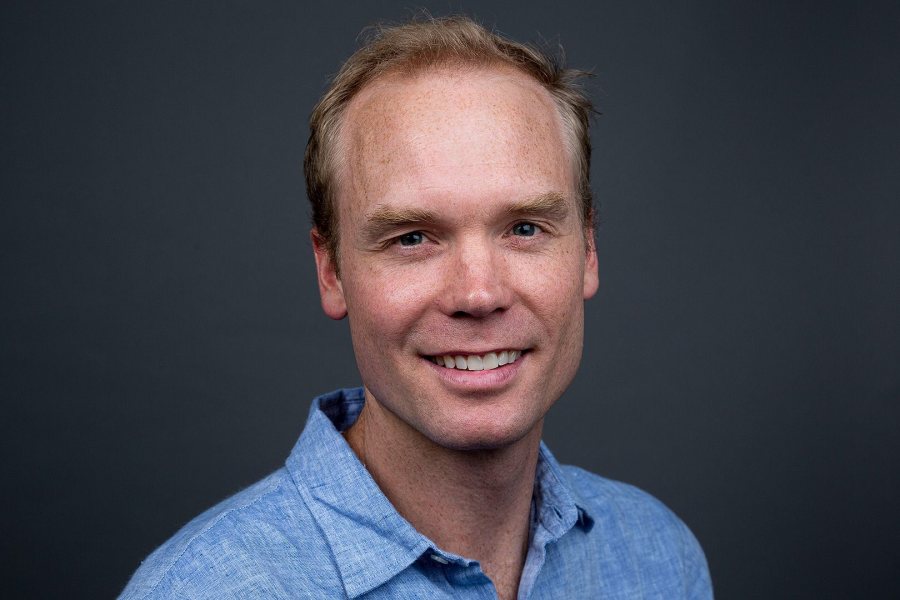
Andrew Mountcastle, Assistant Professor of Biology. (Josh Kuckens/Bates College)
+Jeffrey S. Oishi, Assistant Professor of Physics
Name: Jeffrey S. Oishi
Position: Assistant Professor of Physics
Where he studied: University of Virginia
Columbia University
Before Bates: Assistant Professor of Physics, Farmingdale State College
His work: Oishi is a computational astrophysicist specializing in fluid dynamics. In a recent project, he developed relatively simple mathematical models to help understand instability in the rotation of magnetized fluids within stars — an analysis that otherwise, he says, demands “far more computational power than will exist in our lifetime.” Undertaken with research partners in Colorado and students at Bates, Oishi’s current project aims to adapt the behavior of solar magnetic fields as models for stars in general.
The appeal of his work: “It’s an intersection of a lot of different fields. I do a lot more math than the average astronomer, more programming than the average theorist, and more astronomy than the average fluid dynamics person. So what really appeals to me is that I can pull from a broad set of skills, which means I’m always learning something new.”
“Ask an Astronomer”: Oishi exemplifies a generation of scientists committed to engaging the public. He took part in the “Astronomy on Tap” barroom lecture series in Brooklyn and joined a friend who, with a sign reading “Ask an Astronomer,” answered questions about the field in the New York subway. “We got a lot of stories from people who liked science as a child, and then something happened and they lost interest or felt they could no longer pursue it — a teacher or experience in school made them feel science wasn’t for them. I’ve been thinking a lot about how to reach those people and make science more inclusive.”
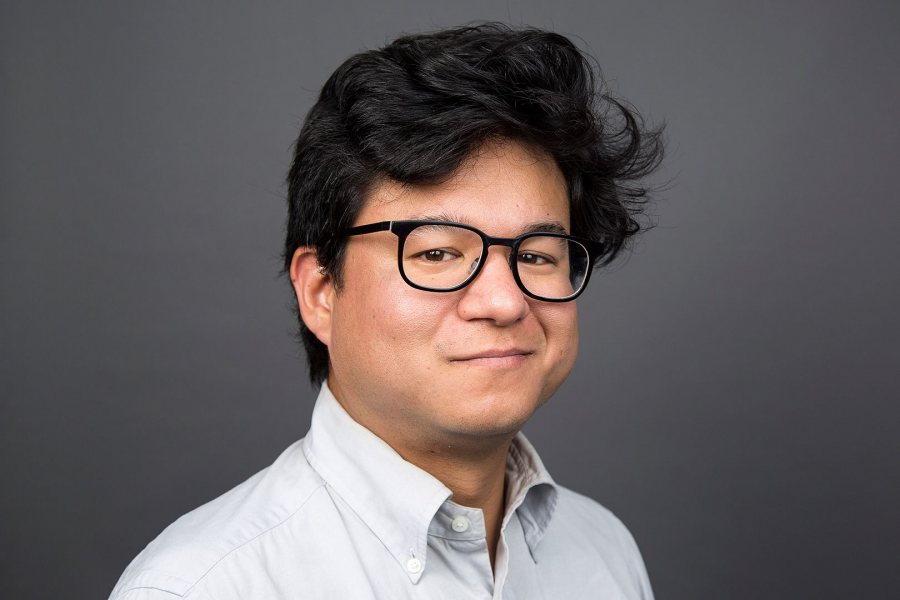
Jeffrey Oishi, Assistant Professor of Physics. (Josh Kuckens/Bates College)
+Patrick W. Otim, Mellon Diversity and Faculty Renewal Postdoctoral Fellow
Name: Patrick W. Otim
Position: Lecturer in History
Mellon Diversity and Faculty Renewal Postdoctoral Fellow*
Where studied: University of Wisconsin-Madison
University of Notre Dame
Gulu University, Gulu, Uganda
Makerere University, Kampala, Uganda
His work: As a Diversity and Faculty Renewal Fellow, Otim is designing courses on African history and African studies more broadly. His research has focused on his native Uganda, but he will teach the history of East Africa this fall, the history of health and healing in the winter, and a broad survey of African history next fall.
Why study Africa? “It is an important continent with a lot of rich and diverse histories and global connections. For example, you cannot study slavery without thinking about Africa. Even in the post-independence era, if you want to talk about things like the Cold War, Africa was greatly involved. So to study history without Africa is just telling only part of a story. Africa really has to be there.”
A teaching goal: Otim comes from a small town called Gulu in northern Uganda, which was the center of the Lord’s Resistance Army insurgency. From 2002 to 2008, he worked for an international NGO assisting people displaced by the insurgency. That work illustrated the clash between Western concepts of justice and local practices: In northern Uganda, victims of wrongdoing expect perpetrators to confess and show remorse publicly, rather than serving time. “It’s this different kind of understanding that I want my students to think about. When you’re in a different cultural context, you shouldn’t think, ‘This is how justice should be.’ It is never uniform. I feel I can contribute to peace by teaching students my understanding of peace.”
* Mellon Diversity and Faculty Renewal Postdoctoral Fellows become tenure-track assistant professors in their second year at Bates.
